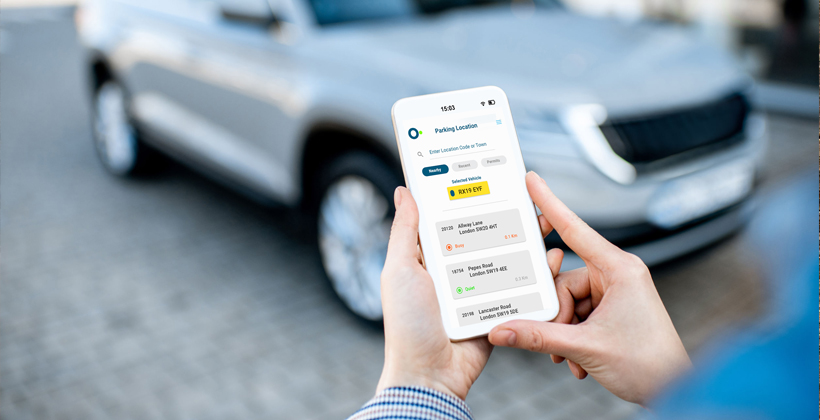Four steps to smart parking
Accessible and time-saving technologies have become part of our daily lives, from plastic cards for payment and mobile phones to NFC wearable devices. Similarly, a smoother travelling and payment experience has become the norm and services that do not offer it will lose users.
According to the World Economic Forum, there will be two billion cars on the road worldwide by 2040. As traffic volumes increase, modernising parking has become the first step towards reducing congestion. The safer and more comfortable a consumer feels while using a service or product, the greater are the chances they will purchase it and the same goes for parking.
Modernise your parking payment experience
Key questions when considering introducing smart parking in a city include:
- Do I need to change infrastructure?
- Should I invest in validators?
- Will it be worth it?
We would like to share some key points that we believe are less frequently discussed but still very important to consider for municipalities and parking operators when planning to modernise the traveller experience.
1. Evaluation and calculation of optimal volume
The first step is to understand the optimal point to start your project. It should be well connected to key routes but accessible on foot. Finding the sweet spot will deliver demand for parking and reduce congestion.
2. Optimal number of service employees
No urban area has ever transitioned to a smart city environment in a single step. The transformation period is the most important time for commuters and the city, which needs to balance ease of use, control and effectiveness. Smart parking requires a dedicated team to ensure everything runs smoothly and on time.
3. Define the rules of parking
Every game requires its own rules and the introduction and governance of smart parking are no different. Parking operators should work closely with government units to develop scenarios for fines, fares and tariffs.
4. Choose your payment methods wisely
Choosing the right payment methods for parking can provide many benefits to governments, parking operators and commuters. The introduction of an automated fare collection system for parking reduces the risk of fraud and operational expenses, as all operations are managed centrally on a server. Having a modern fare collection system allows commuters to pay not only with cash but also devices from bank cards to wearables supporting NFC. We believe in the future of micropayments in smart cities, which is why we designed our solution to suit not only the methods above but also e-wallets and local travel cards. Read more about how contactless payment systems are shaping the future.
Frequently asked questions
Do I need to change my infrastructure?
This depends on the system you have chosen to use for upgrading your parking user experience. By choosing the O-CITY platform, the need to change infrastructure is eliminated as the platform is hardware agnostic. O-CITY AFC is built for a seamless transition to a cashless economy, with contactless payments that are suitable not only for mass transit but also for parking.
Should I invest in validators?
It is true that the number and functionality of validators influence the completeness of the user experience. It is a common practice to have more than one validator machine to reduce waiting times for payment or introduce a mobile application. From a technology perspective, some validators may only accept special bank cards or pin-entry cards, while mobile applications require only an internet connection. The O-CITY mobile application is linked to the AFC platform, making the payment easier to track for parking providers.
Will it be worth it?
Consider the example of Vienna. In the last decade, Vienna was overcrowded with traffic, which was poorly managed and led to increased risk for pedestrians and cyclists. The city decided to develop a smart parking management programme, which involved increasing short-term parking zones and improving fare management. The aim of the project was to improve the residential environment and accessibility of routes to other vehicles and reduce traffic and emission volumes through a reduction in cruising time. Reducing traffic volumes and improving the accessibility and friendliness of city routes has had a great impact on Vienna’s social and economic status.
Future of parking
At O-CITY we believe parking is an inevitable part of city life and its dwellers and can positively impact the city environment if properly managed. According to McKinsey, growth in the personal mobility market will accelerate as the car becomes less of a means to travel from A to B and more of a personalised solution. The increase in demand for such solutions will increase city congestion, decreasing the attractiveness and accessibility of the city environment.
The transformation and optimisation of parking are one of the main pillars towards the transition to a smart city. Creating an available, transparent payment environment for drivers will not only encourage the use of an official parking space but also increase the profitability of these spaces. To know more about the smart city trends in 2021.
Our automated fare collection solution is built with a focus on flexibility and adaptability to address any problems that may arise during your transition to smart city status. Other solutions take a generalist approach to overcoming stakeholder challenges. We believe in an inclusive and open approach, personalising the final product for any requirement, be it the development of complex tariffs for parking or public transport, or optimisation and simplification of fare collection mechanisms.
Get to know more about innovation in parking facilities here


